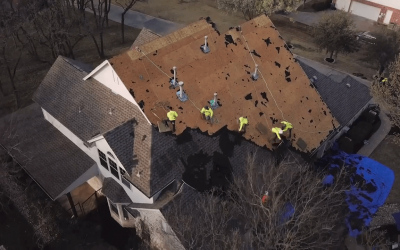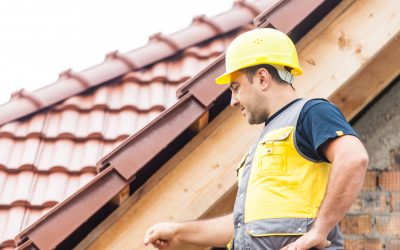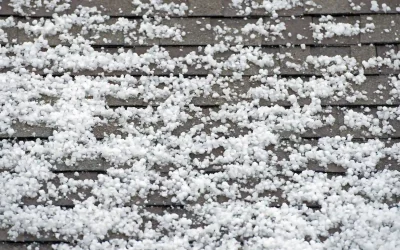PVC roofing, short for polyvinyl chloride roofing, is a type of single-ply roofing membrane that has been widely used for commercial, industrial, and even residential buildings for decades. Known for its long-lasting performance, waterproof qualities, and resistance to various environmental factors, a PVC roof is an increasingly popular choice for property owners looking for a reliable roofing solution.
Whether you’re planning a new construction or considering a re-roof, understanding what PVC roofing offers can help you make a more informed decision.
What is a PVC Roof Made Of?
A PVC roof consists of a single-ply membrane made from a blend of UV-resistant polyvinyl chloride, plasticizers, and stabilizers. It’s reinforced with polyester or fiberglass to increase durability and flexibility. This composition creates a roofing material that’s strong, yet flexible enough to withstand harsh weather conditions, building movement, and structural shifts.
Key Benefits of PVC Roofing
1. Excellent Durability and Longevity
PVC roofing is highly resistant to punctures, chemicals, fire, and UV radiation. Unlike traditional asphalt-based systems, it doesn’t become brittle over time. With proper installation and maintenance, a it can last 20–30 years or more.
2. Energy Efficiency
PVC membranes typically come in white or light colors, helping reflect sunlight and reduce heat absorption. This reflective quality helps lower cooling costs in warmer climates, making it a great option for energy-conscious building owners.
3. Low Maintenance Requirements
Thanks to its resistance to mold, algae, and chemical exposure, PVC roofing requires minimal upkeep. Routine inspections and basic cleaning are generally enough to maintain its integrity.
4. Waterproof and Leak-Resistant
One of the standout features of PVC roofing is its ability to create watertight seals. Installers heat-weld the seams instead of gluing or mechanically fastening them, creating a continuous surface that prevents water penetration..
Applications for PVC Roofing
PVC roofing is most commonly found on flat or low-slope commercial roofs, but its advantages have made it increasingly popular in residential applications, particularly in modern architectural designs.
Typical uses include:
- Warehouses and distribution centers
- Retail and office buildings
- Residential flat roofs
- Rooftop patios
The Role of PVC Roofing Sheets
When discussing PVC roofing, you’ll often come across the term PVC roofing sheet. These sheets are the core material of a PVC membrane system. Available in various thicknesses (typically ranging from 45 mils to 80 mils), they are manufactured to meet specific structural and environmental needs.
The strength and flexibility of PVC roofing sheets make them easy to install around corners, vents, and other roof penetrations—reducing weak points and the risk of leaks.
Environmental Impact and Sustainability
PVC roofing is not only energy-efficient but also recyclable. Many manufacturers produce PVC membranes that meet or exceed environmental standards like Energy Star and Cool Roof Rating Council (CRRC) requirements.
Some advantages from a sustainability standpoint include:
- Reduced heat island effect in urban areas
- Lower cooling demands and energy usage
- Recyclable at the end of its life cycle
Key Considerations Before Installing a PVC Roof
Before opting for a PVC roof, there are a few factors to keep in mind:
- Installation Expertise: Improper installation can compromise performance. Always hire certified roofing professionals experienced in PVC systems.
- Initial Cost: While slightly more expensive upfront than some alternatives, the longevity and low maintenance of PVC roofing often balance out the investment over time.
- Compatibility: PVC is not compatible with asphalt-based products, which can affect re-roofing projects unless existing materials are fully removed.
Maintenance Tips for a Long-Lasting PVC Roof
Even though PVC roofs are low-maintenance, regular care extends their lifespan. Here are a few best practices:
- Schedule biannual inspections, especially after severe weather.
- Clean debris and standing water to prevent membrane damage.
- Check seams and flashing details for signs of wear or separation.
- Avoid walking on the roof unless necessary, and use walk pads where frequent access is required.
Is PVC Roofing Right for You?
If you’re looking for a roofing material that combines durability, energy efficiency, and long-term cost savings, PVC roofing is worth serious consideration. It performs exceptionally well in various commercial and residential settings, especially in areas prone to heat, rain, or chemical exposure.
By understanding the components, advantages, and limitations of PVC roofing sheets and full membrane systems, you can better decide if this solution aligns with your property’s specific needs.
Ready to Explore the Benefits of a PVC Roof?
At Quick Roofing, we bring decades of experience installing high-performance roofing systems, including industry-leading PVC roofing solutions. Whether you’re planning a new build or replacing an old roof, our team is here to help with expert advice and quality craftsmanship.
Contact Quick Roofing today to schedule a consultation and discover how a PVC roof can protect your property for years to come.




